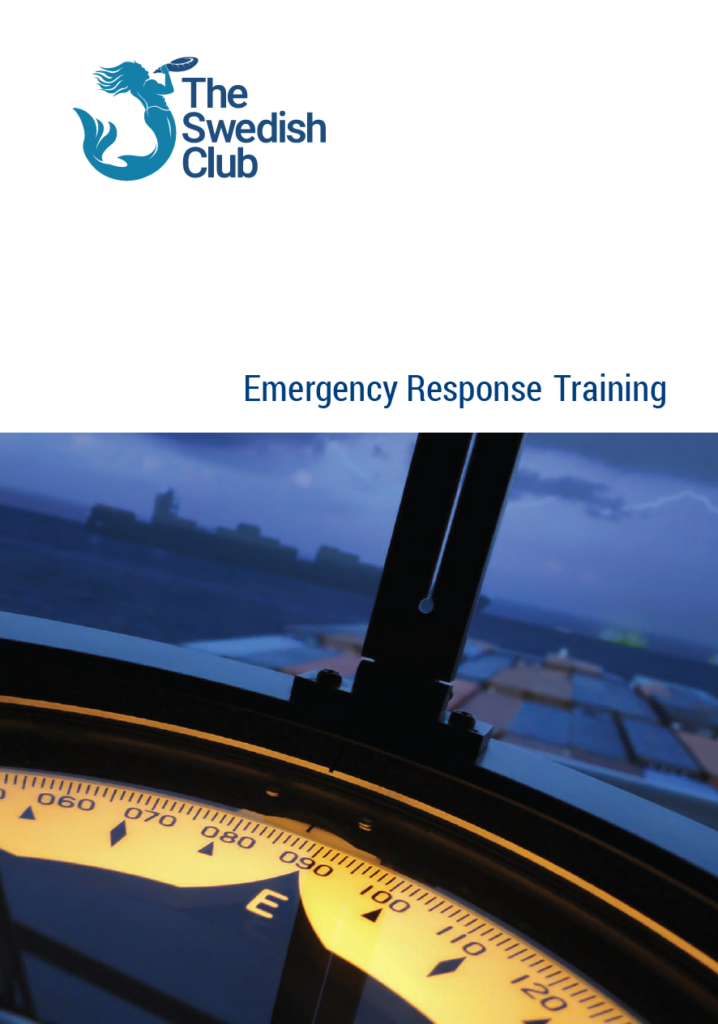
Loss Prevention
You can download the publications, or you can request a copy from lossprevention@swedishclub.com.

Passage Plan+
Voyage/Passage planning is something that must be carried out for every vessel before departure. Every company has its own procedures and there are many guides defining how it should be handled. This guide should be seen as a complement to the individual member’s already existing Voyage/Passage Plan procedures. We therefore call this document Passage Plan +.
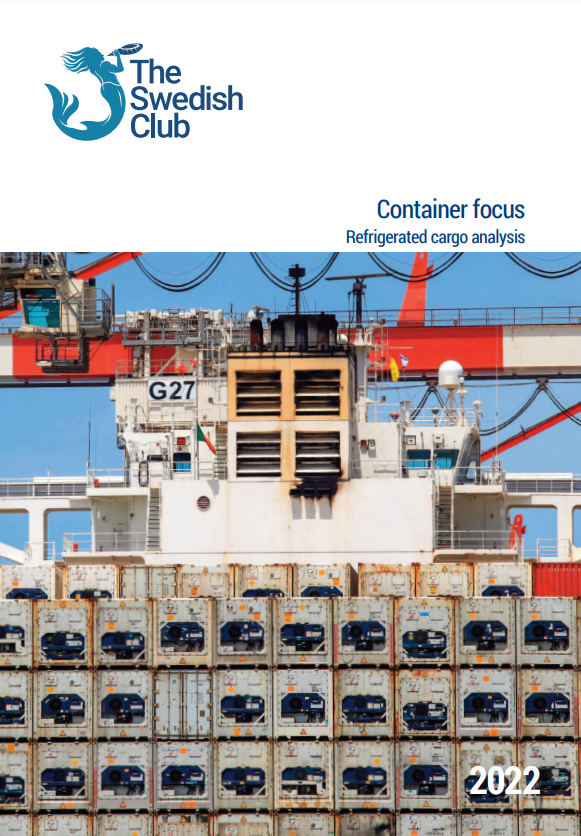
Refrigerated cargo analysis
During the pandemic, a high number of reefer containers being delayed either in port or during transportation to and from port via road or rail has resulted in a peak in refrigerated (reefer) container claims. This loss prevention report focuses on the most common causes of reefer container claims, and provides analysis, case studies and loss prevention advice.
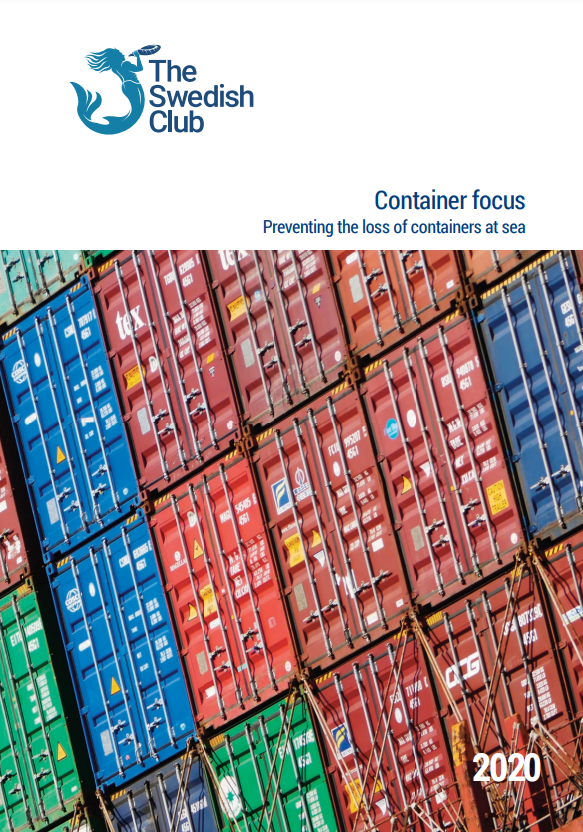
Container focus: Preventing the loss of containers at sea
The container industry is perceived by many as the modern face of shipping. Yet, despite the sector being well regulated and highly regarded, containers are still lost overboard. Container focus: Preventing the loss of containers at sea, a new loss prevention report from The Swedish Club provides an overview of statistics, and insight into specific cases, and with the help of experts, delivers hands-on advice for preventing such losses.
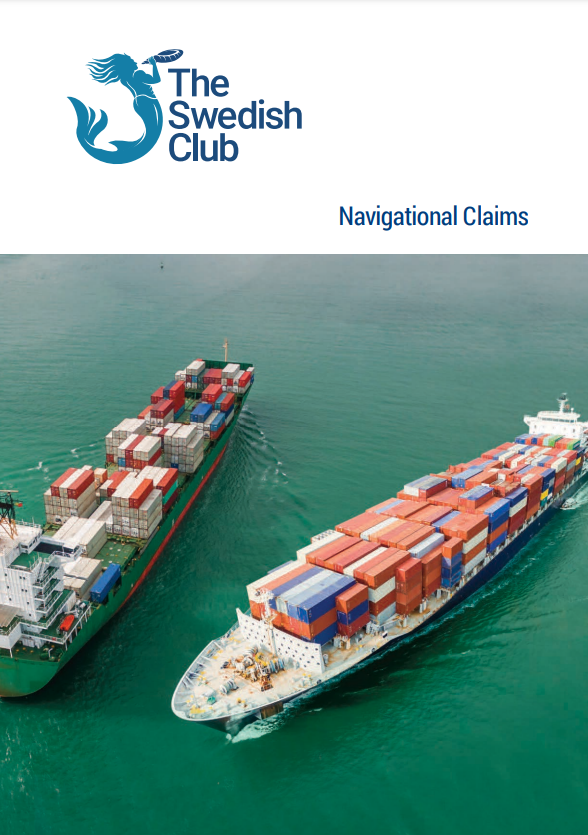
Navigational Claims
The Swedish Club has spent many years compiling and reviewing information on navigational claims, which the Club defines as collisions, contacts and groundings. The aim of ‘Navigational Claims’ is to use that experience to provide those crewing a vessel with the knowledge that they need to avoid major pitfalls that we have seen occurring all too often. We have based our findings on statistics and our own experience of specific claims. This publication aims at not only highlighting the most common errors, but more importantly focuses on providing suggestions on how to prevent claims, increasing the safety of those on board and reducing vessel casualties.
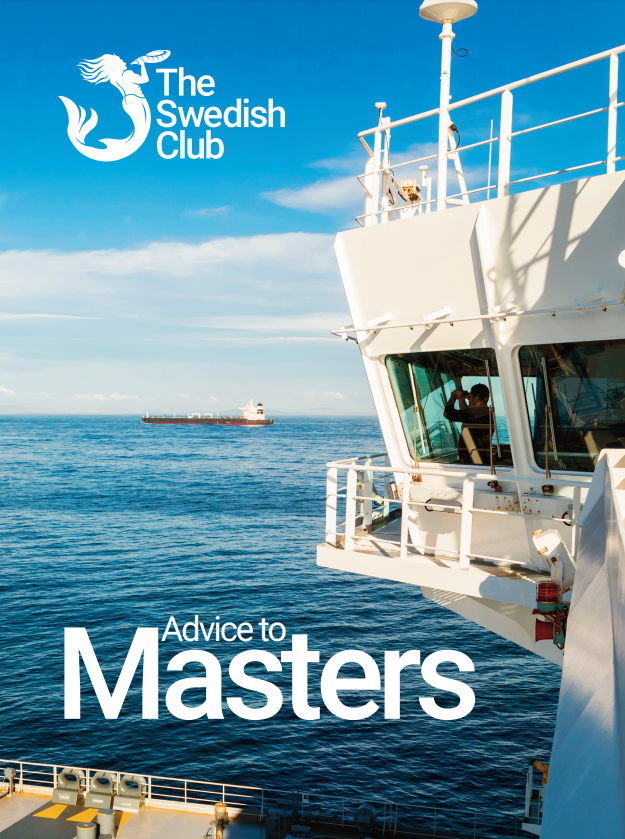
Advice to Masters
In any casualty, as the Master, you play a crucial role. You are on the scene, with the ability to minimise the casualty’s consequences and facilitate handling matters between the owners and The Swedish Club. Advice to Masters is designed to support that process and not supersede or contradict any instructions issued by the owners. It aims to provide you with advice relating to a casualty from the underwriter’s point of view.

Auxiliary Engine Damage
The Auxiliary Engine Damage report has been created in response to members’ concerns over damage to auxiliary engines. Its objective is to investigate auxiliary engine claims, highlight predominating factors and provide advice with a view of reducing the frequency/severity of auxiliary engine damage. The Swedish Club has always had a proactive policy directed at raising awareness of claims trends and hands on advice on how to mitigate casualties. This report aims to shine a light on the important issue of damage to auxiliary engines, a significant segment of machinery claims – both in number and cost.
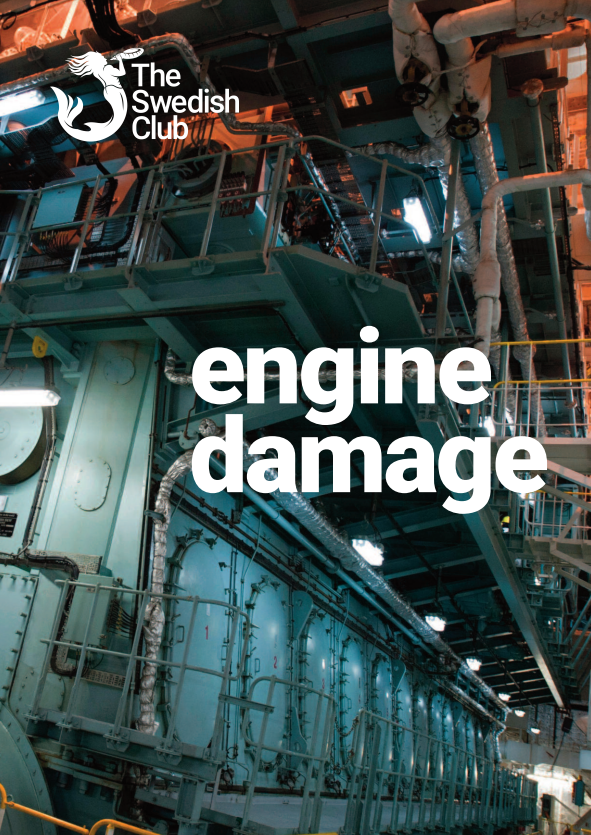
Engine Damage (case studies)
Main engine damage is an expensive category of claims that occurs far too frequently. Statistically, a vessel will suffer between one and two incidences of main engine damage during its lifetime. The case studies in this publication are chosen to showcase some of the most common causes of engine damage. The cases are taken from real-life situations where an insurance claim is valid.
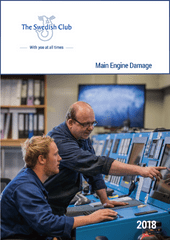
Main engine damage
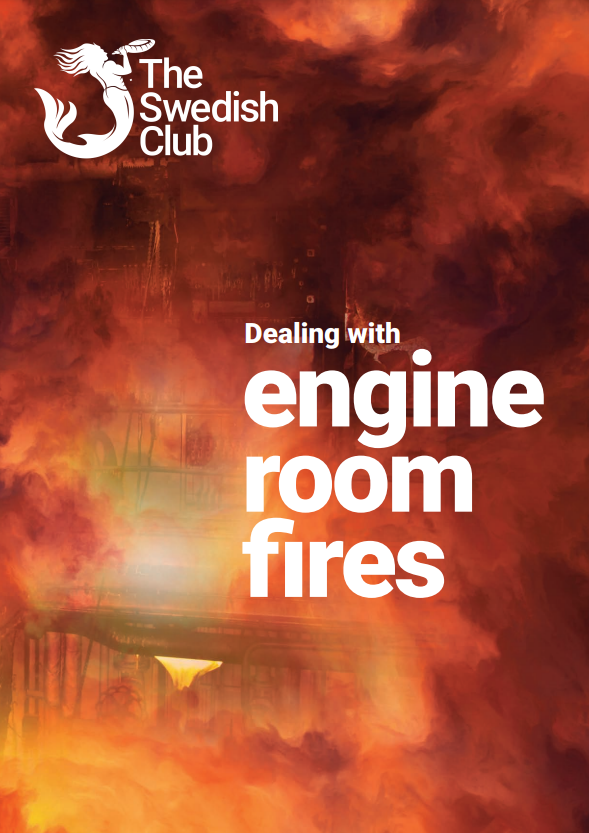
Dealing with Engine Room Fires
Engine rooms on ships have all the ingredients for a fire – oxygen, heat and flammable liquids under pressure. Not surprisingly, one of the dominating causes is lube-oil or fuel-oil mist spraying onto hot surfaces and then igniting. This Loss Prevention supplement gives an overview of the causes and advice on avoiding engine room fires. Through some actual cases, different scenarios are illustrated. Initially the study aims to put main engine damage claims into context by examining claims statistics for the Hull and Machinery (H&M) segment. It then examines in detail main engine damage claims – specifically frequency, vessel type, engine manufacturer, engine speed, damaged parts and cause of damage.
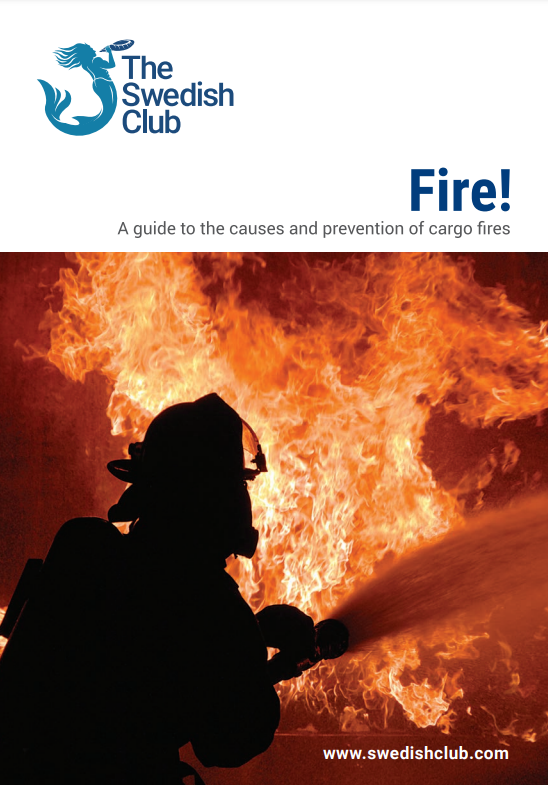
Fire! A guide to the causes and prevention of cargo fires
When a fire breaks out on board a vessel there is no fire service ready to assist in extinguishing it – it is up to the crew themselves. The consequences can be catastrophic, and all those who have worked on board a vessel are aware of the difficulties involved with managing a fire and the crucial importance of fire prevention. The information in this handbook is designed to assist shipowners and crews in those fire prevention efforts.

Fire! A guide to the causes and prevention of cargo fires
When a fire breaks out on board a vessel there is no fire service ready to assist in extinguishing it – it is up to the crew themselves. The consequences can be catastrophic, and all those who have worked on board a vessel are aware of the difficulties involved with managing a fire and the crucial importance of fire prevention. The information in this handbook is designed to assist shipowners and crews in those fire prevention efforts.
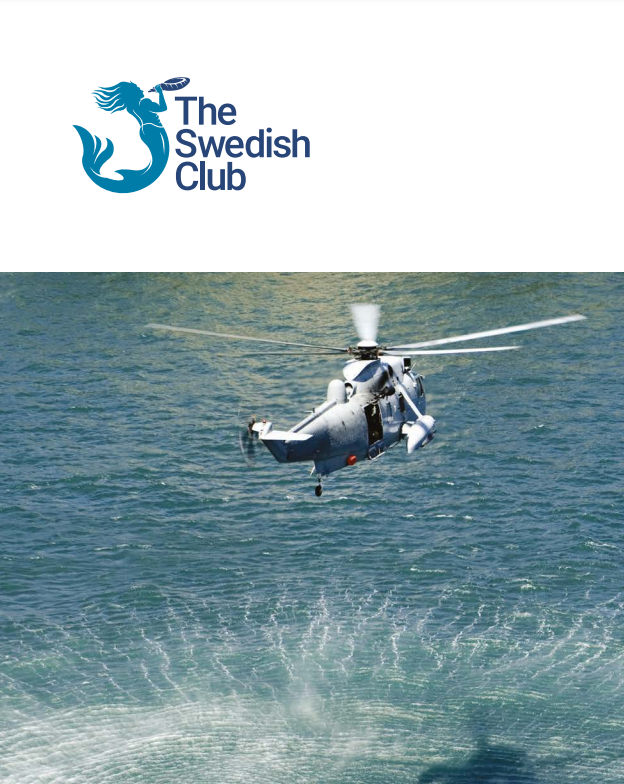
Anatomy of an Accident
Anatomy of an Accident is our latest publication which provides a unique insight into a huge coordinated exercise surrounding a serious vessel casualty. Illustrating just how easily an incident can escalate, the guide explores the various parties and processes involved in dealing with an emergency situation and the complicated interplay between the cast of professionals involved in bringing an incident to a resolution.
How do you handle media in a crisis?
Dustin Eno, COO & Crisis Response Manager at Navigate Response, gives his advice:
